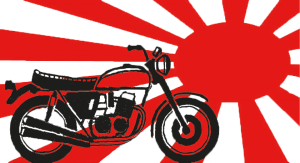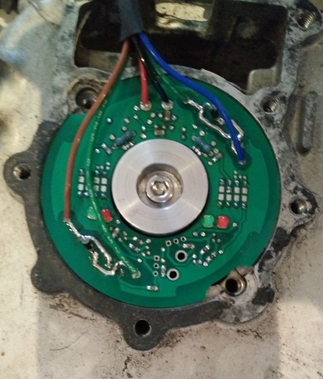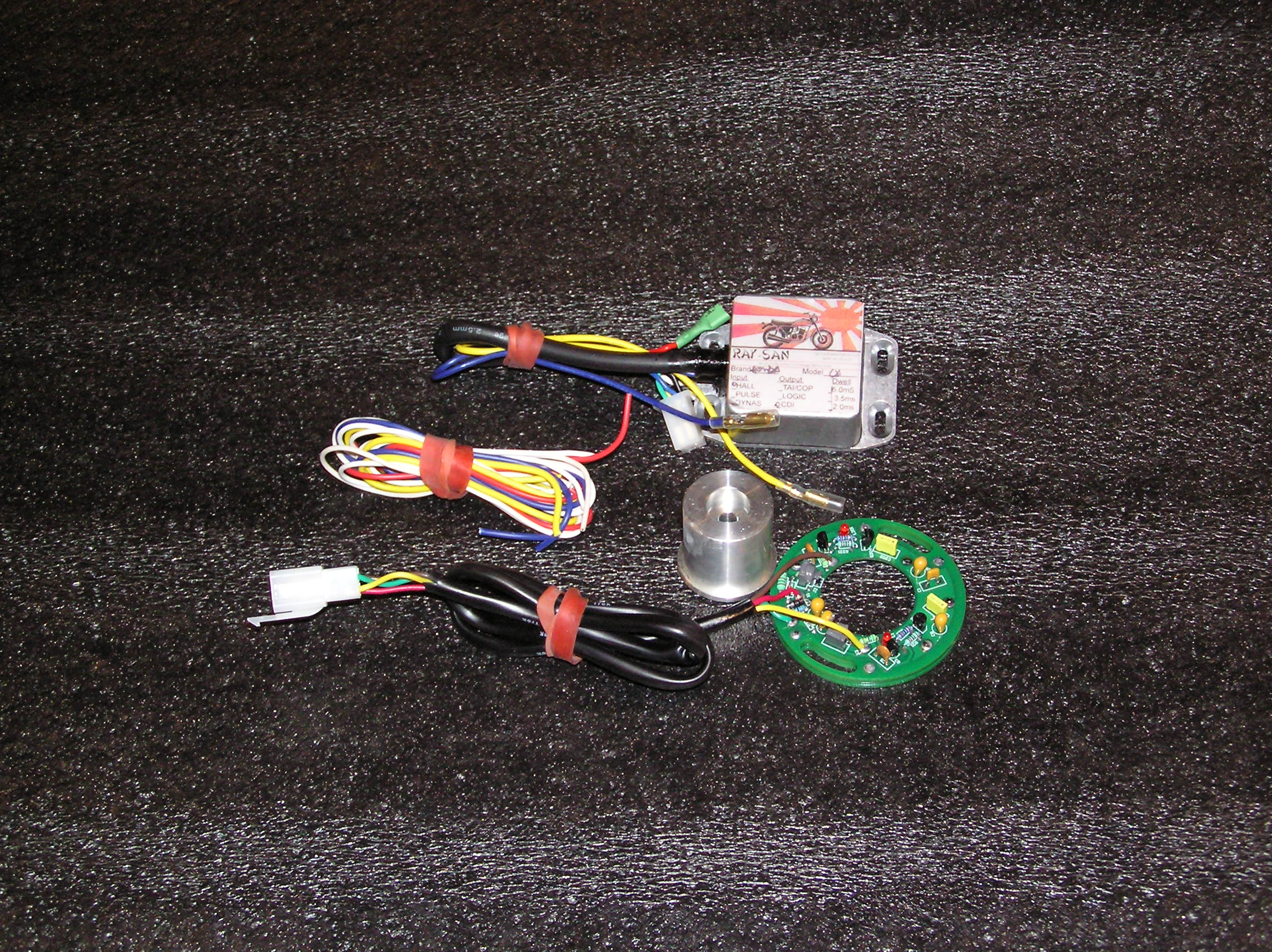CX 500/650 and GL500/700 TAI Ignitions
There is now a version 4 model for the TAI bikes – ie CX eurosport 500/650 and GLs 500 and 600 – as well as any other TAI CX.
This uses the general HALL multibike module – but using a hall plate to fit the TAI back cover
This is the prefered option – unless you specifically need the dual CDI / TAI capability.
WHY?
This started with the development of the CDI ignition replacement. For the history on that see here.
In 1982 Honda pretty much changed from the CDI system on the CX to a 12V TAI system, in line with many of the other bikes coming off its production line at this time and in line with other manufacturers and the move away from points based systems.
Along with the change in the ignition there were also some design revisions to the engine in the form of the camshaft lift and duration and a more rapid advance profile.
While the specs of the bike remained the “same” there is a noticeable difference in the drivability and acceleration between the original and the reworked engine of the 500 and obviously a further power increase with the availability of the 650 engine in 1983. (NOT talking about the turbos here …)
These bikes use a mechanical centrifugal advance assembly – springs and weights that provide ignition advance by rotating the trigger assembly relative to the stationary trigger coils. This is a lot simpler than the previous arrangement with multiple trigger coils, advance coils and charging coils on the stator and was intended to be a more long term reliable solution at the expense of a small amount of maintenance to make sure the advance mechanism it is not stuck and moves freely.
The trigger coils for the TAI mechanical advance system are of fairly standard design– similar to those used on the DOHC CB 750/900s but are just different enough to unique to the CX – and of course no longer available new. These are starting to fail with age, with no effective replacement available – until now.
So the solution: an extension of the Hall Effect sensor from the CDI system to drive the TAI bikes.
The same trigger rotor is used just with the magnet in the alternate location, and a new circuit board with different code and driving 12V coils instead of the CDI modules, that mounts from the rear case.
The picture below shows the board mounted on a TAI rear cover with the rotor in place. (prototype)
WHAT IS IT?
This is the Rae-San TAI CX/GL Hall Effect Ignition. (Model CX_HALL_TAI-S)
It provides
- Dual independent ignition control for the CX/GL 500 and GL500/700 TAI engined motorcycles using the wasted spark system.
- Computer controlled advance based on the trigger pulses.
- Replaces the existing Mechanical advance rotor and the 30 year old pickups with a new fully electronic system utilising hall effect devices
- Integral coil drivers – in place of the stock NEC style igniters to give improved spark energy.
FEATURES
- Operates of 12V only.
- Provides electronically adjusted advance.
- Provides extra delay during cranking – START ASSIST for easier starting and less stress on the engine. Particularly important for the CX 650 and GL700 in cold weather.
- Provides ability to choose from 4 standard advance profiles for the bike chosen.
- Provides adjustability of the profiles via reprogramming.
- Provides 2 stage RPM limit – progressively retards timing over 2000 rpm – then stops firing >2000 rpm over selected limit.
- Provides pre-set RPM limiter to protect your engine.
- Provides 4 selectable advance/RPM limit profiles.
- Fully electronic.
- Contains two completely independent circuits – one for each cylinder to provide failsafe redundancy.
- Provides power cut-out to protect ignition coils in the event of stalling.
- Provides higher spark energy than original due to 0.25 ohm output resistance driver.
- Existing kill switch functionality is retained so there is no need to rewire switches.
- Dwell limiting – provides coil protection for any stop position
HOW DO I INSTALL IT?
Installation is simple but requires access to the rear of the engine to remove the old mechanical advance unit – please see link below to the installation manual.
In Short:
- Unplug your existing TAI driver modules, (NEC modules)
- Remove the timing cover from the rear of the engine.
- Remove the timing plate with the old pickup coils. (2 bolts)
- Unplug the pick-up connector from the bike harness.
- Remove the mechanical advancer unit – 1 bolt.
- Install the new rotor in place of the mechanical advancer (1 bolt)
- Install the new TAI Ignition plate in place of the old – (2 bolts)
- Feed wires though the rubber grommets.
- Connect the new connector to the bikes wiring harness. Turn power on.
- Perform Static Timing – using the indicator LEDS.
- Select settings or leave at the supplied defaults.
- Reinstall the timing cover.
- Reinstall engine.
- Ride.
HOW DO I KNOW WHICH ONE I NEED?
There are only two variants – and the hardware is the same – the differences are in the pre-programmed software for the 650/700 or the 500. The 650/700 has START ASSIST build in whereas the 500 does not. The timing curves and RPM limits are set differently for the two different engines.
The Installation manual found at the end of this page by following the link has a detailed instructions.
Please indicate your bike model and year in the order so that jumpers can be pre-configured for you.
(500 / 650 C/EC/ED/GL)
The Kit is shown below and includes: (Note: this is the prototype – so ICs are in sockets and no coating has been applied yet.)
- TAI configured Hall Rotor
- TAI Hall Sensor board with integral coil drivers and appropriate software
- Mounting bolt(s). (not shown)
Note the adaptor plugs are no longer included as its simpler to do a direct connection
WHAT DO I GET?
All Rae-San products come with a 12 month return to base warranty against manufacturing faults and product failure as a matter of course.
You’ll get the unit itself, a copy of the installation instructions for the variant you’ve chosen and email support if needed to help you get installed and operational.
date or to suit different bike.


